Basic Programming Languages That Are Kid-Friendly
Basic Programming Languages That Are Kid-Friendly
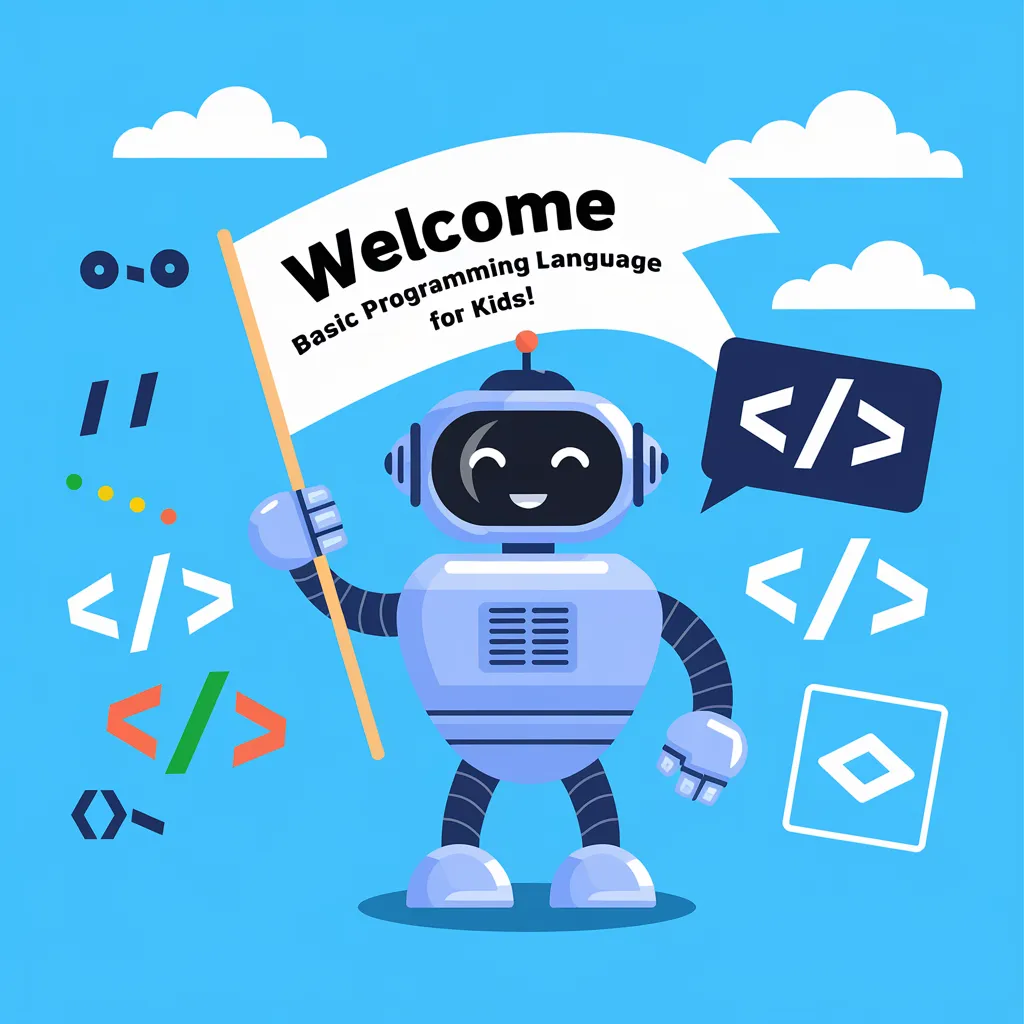
In today's digital world, knowing how to code is just as important as knowing how to read and write. When we introduce kids to computer programming languages at a young age, we are not just giving them technical abilities—we are opening the door to imagination, critical thinking, and problem-solving.
Mastering technology allows children to go from passive consumers to active creators, innovators, and solvers. Coding teaches kids to approach challenges logically, think through complex problems, and use their creativity to tell stories and design games. It's a skill that encourages curiosity and prepares children for a tech-filled future in every field.
Introduction to Programming for Kids
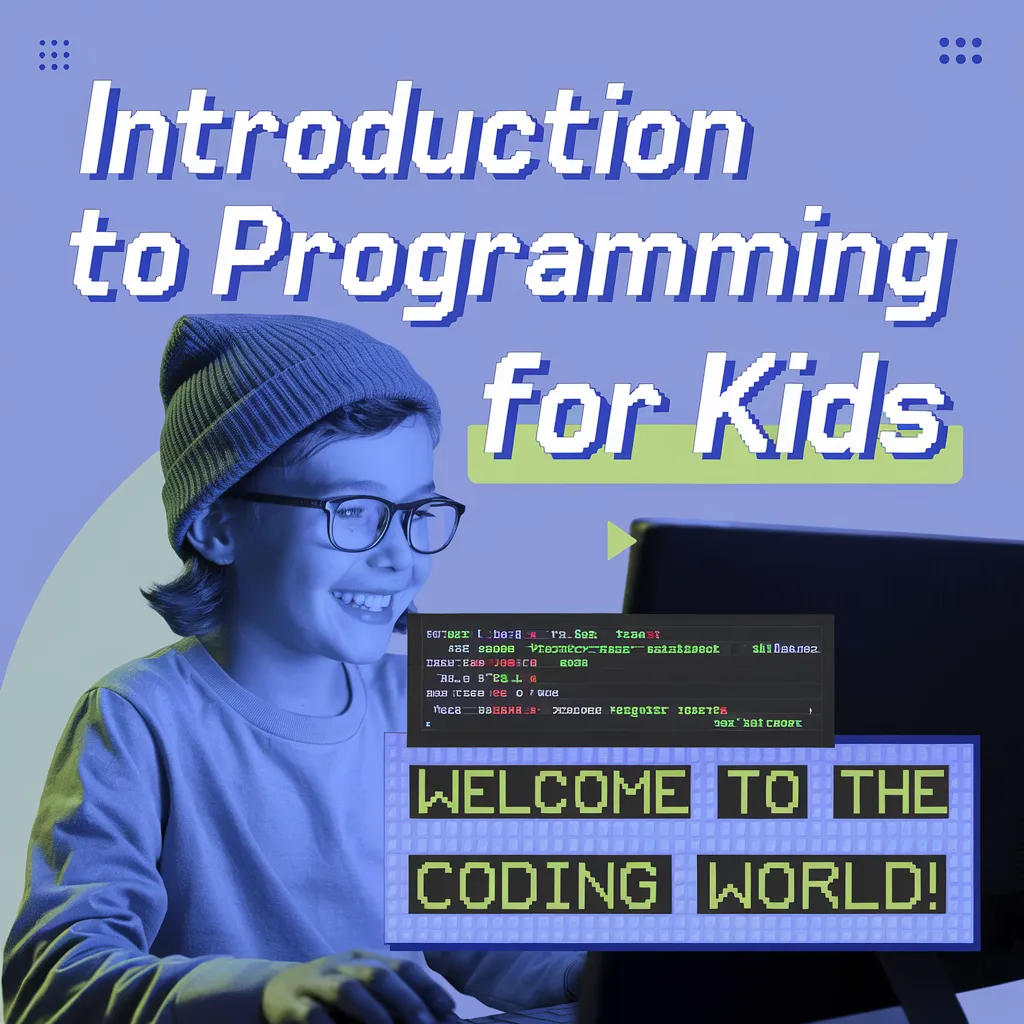
Programming is like giving instructions to computers to do cool things. It involves learning different coding languages to make software, apps, websites, and games. For kids, learning to code is like a whole new way of showing off their creativity and solving problems. It also helps them understand how all the digital stuff they interact with daily works. Plus, programming isn't just about technical skills. It also hones critical thinking, logical reasoning and the ability to tackle tough challenges. In a world where technology is everywhere, knowing how to code gives kids the power to create amazing things and opens the door to all kinds of future opportunities.
The need for coding skills is rising as technology shapes different industries. It's becoming a crucial part of education to give up the modern world. Schools are now including programming languages in their lessons Because it helps students think critically, solve problems, and be creative. By starting coding early, students are prepping for tech jobs and grasping the digital world better.
Programming plays a role in shaping future tech careers. Learning in-demand programming languages can help individuals kickstart their careers in software development and address the challenges beginners face in choosing a language to learn.
Why Are Languages of Programming Valuable in School Education?
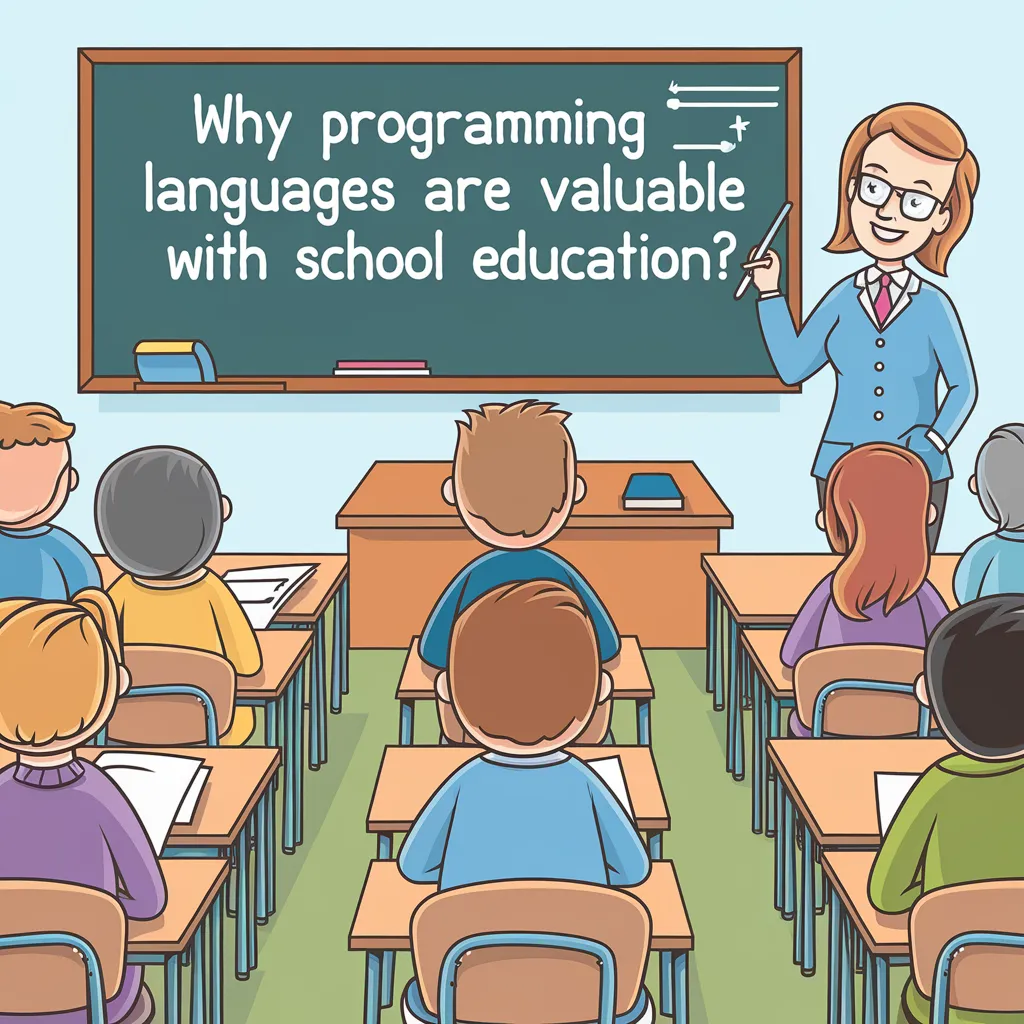
Languages of Programming and programming knowledge, especially those of different programming languages, complement traditional education by fostering logical thinking and improving math, computer science concepts, logic languages, human language, and analytical skills.
Case studies or examples of how kids apply coding skills in real-world school projects demonstrate the practical benefits of learning to code in many programming languages. For instance, students have created apps to solve everyday problems, developed websites for school events, and even programmed robots for science fairs in other than the most popular programming languages ever. These projects enhance their basic understanding of various subjects and prepare them for future roles that may require proficiency in multiple programming languages.
Best Programming Language to Learn for Young Beginners
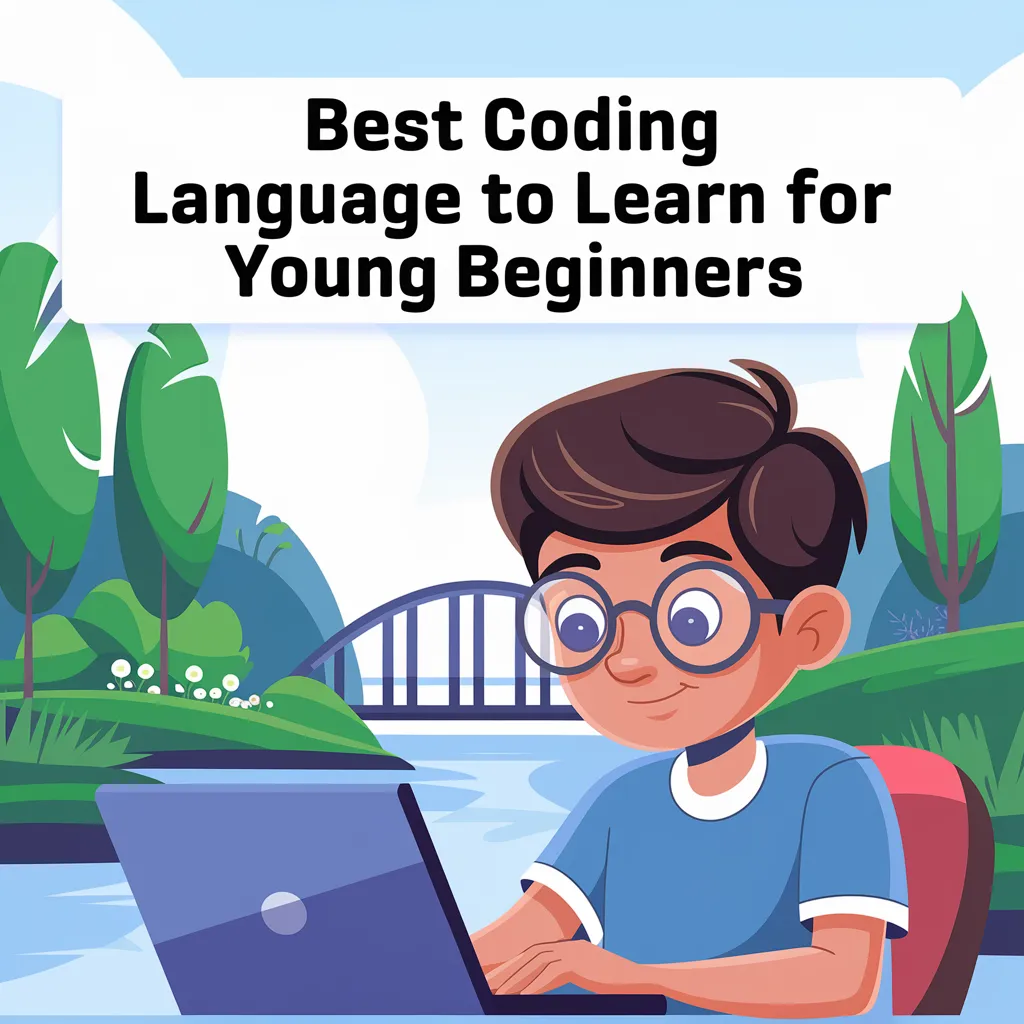
Simplicity and engagement are key when choosing the best programming language to learn. Scratch is widely used as a wonderful starting point for kids because of its easy-to-use block-based coding system, which allows them to create animations, games and stories without getting bogged down by complex syntax. This visual approach helps young learners adapt fundamental programming concepts like loops, variables and conditions in a fun and interactive way.
Another wonderful option is Python, an open-source programming language known for being user-friendly and versatile. Python is a top choice open-source programming language for children because it is simple and easy to read, making it easier for young children to build their problem-solving skills while creating projects like games and basic AI. Languages like Javascript and HTML/CSS are also the most popular languages of programming choices because they let kids bring their coding creations to life through interactive web pages. Ultimately, the best programming languages for young beginners depend on what they are most excited to learn and create.
Here's a breakdown of why each language is beginner-friendly and why other more in-demand programming languages are less accessible to new programming languages and young learners.
Scratch
Simplified surface: Instead of typing lines of code, Scratch uses colourful blocks that are easy to drag and drop, making it perfect for beginners.
Instant response—With Scratch, you can see the results of your code immediately, making it easier to learn from your mistakes and improve.
- Fun and Interactive—From creating fun games to animated stories, Scratch keeps you entertained while you learn about coding.
Python
Easy-to-understand Syntax—Python's syntax is closest to natural languages, making it easy to read.
Adaptable—It is versatile, can be applied, and is widely used in web development, data science, and more, offering a world-rounded perspective.
- Thriving community- Full of resources, libraries and support ready to help you
Java Script
Instant creations- See your creations come to life right in your browser, keeping you hooked and excited.
It's beginner-friendly, so you'll pick up the basics quickly and be able to create cool, interactive web pages easily.
- In-demand-Mastering Javascript is a must for anyone interested in web development, giving you valuable hands-on experience.
Blockly
Block-based coding- Like scratch, blockly uses colourful texts to teach you programming concepts without worrying about syntax errors.
Instant Feedback—With Blocky, you can see how your code performs when you write it, making it easy to spot errors and grasp coding concepts in real time.
- Fun and Functional- Blockly fosters creativity by allowing users to create various projects, from interactive puzzles to valuable prototypes. Learning coding skills has never been more engaging and interactive.
More challenging Programming Languages to learn
C/C++
Complex syntax- The syntax in C/C++ is more intricate and requires a grasp of memory management, which might present a bit of a challenge for beginners.
Manual memory management- Things like pointers and memory allocation can be powerful tools, but they can feel a bit overwhelming before starting out
- Lower-Level- It is often used for system-level programming, meaning you must understand how hardware interacts. This can make it a bit tough for beginners to dive into.
Java
Java's Syntax —Java's syntax may be overwhelming for beginners because it is very detailed and requires strict organisation.
Object-Oriented Concepts—Although learning object-oriented programming languages is required, Java's rigid approach to these concepts can be confusing for newcomers who are not yet familiar with classes, objects, and inheritance.
- Setting up Environments—Getting started with Java developers' environments such as Eclipse and IntelliJ can be a bit tricky and might slow down your initial learning process.
Swift (iOS Developers)
Accessibility Limitations—Swift is primarily used for iOS development, so learners will need Apple hardware resources to work on it, which may limit accessibility.
- Challenging concepts- Swift introduces difficult concepts like optional, closure and protocols early on, which can be overwhelming for beginners.
Rust
Memory safety with complexity- Rust's emphasis on safe memory management is impressive but it comes with complex concepts like borrowing and ownership
Strict compilation rules- The computer is helpful but can be tough on beginners, making the learning curve quite steep.
- Systems programming focus- Rust is commonly used for performance-driven applications that may not best fit beginner projects.
Pros and cons of block-based coding languages versus text-based programming languages.
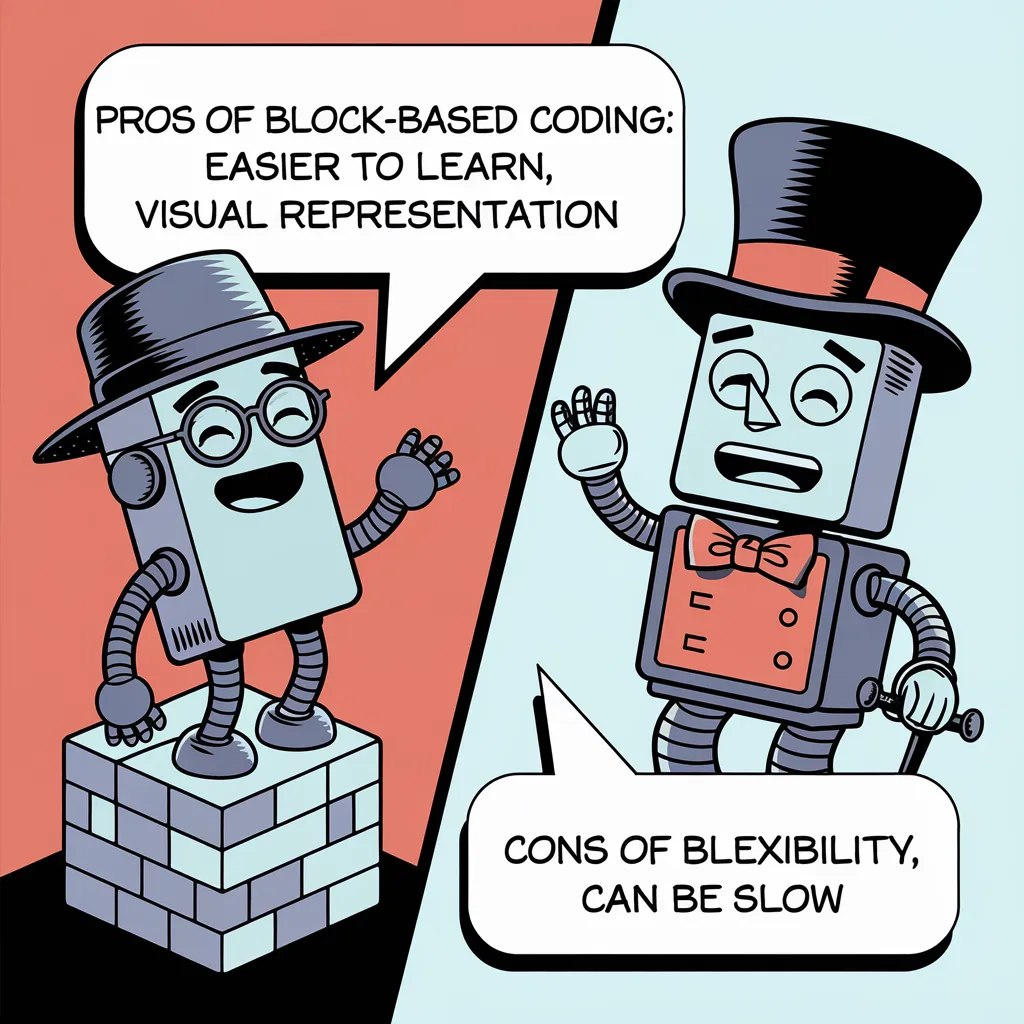
In this ever-changing world of language programming, educators and developers have an ongoing discussion about the benefits of block-based coding languages versus traditional text-based coding languages. Block-based languages are perfect for beginners because they use visual interfaces where users can create code by stacking blocks representing different commands. This makes learning to code easier and more approachable for kids and newbies. Conversely, text-based languages require writing code in a specific manner but offer more control and flexibility for advanced programming tasks. Let's look at the advantages and challenges of both types of programming languages.
Criteria | Block-Based Coding Languages | Text-Based Programming Languages | |
Learning Curve | Easier for beginners; more intuitive. | Steeper learning curve; requires understanding syntax. | |
Visual Representation | Provides a clear visual layout of code structure. | Less visual; can be harder to grasp for beginners. | |
Error Handling | Less prone to syntax errors; user-friendly. | Allows for detailed error messages; more control. | |
Flexibility | Limited in terms of complex programming constructs. | Highly flexible and supports complex constructs. | |
Community Support | Growing community but smaller than text-based languages. | Large, established communities with extensive resources. | |
Advanced Features | May lack advanced features needed for professional projects. | Rich in advanced features and libraries. |
What Is a Programming Language and Why Does It Matter for Kids?
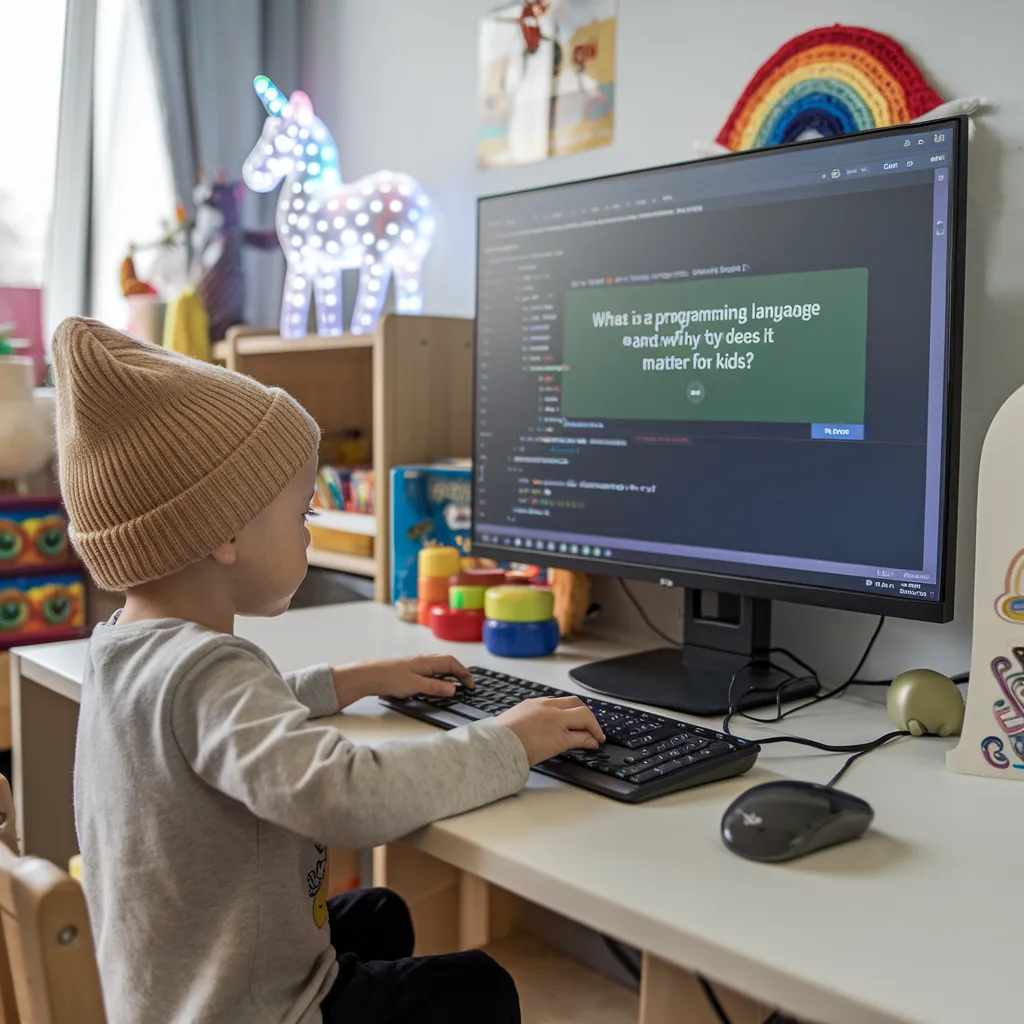
Programming languages are like giving instructions and the first languages of programming to a robot friend. Imagine telling a robot friend how to clean your room, solve puzzles or play games. Instead of using English or Spanish to talk to each other, programmers use procedural programming languages such as Python or scratch or JavaScript to talk to computers. These languages allow us to give us instructions in a way that computer understands even though computer primarily communicate in binary code a simpler language known as machine code so lets dive in and learn the language of computers with programming language.
Learning to code can be really good for kids because it's kind of like learning a language or playing a sport, keeps the brain active. Coding helps kids get better at solving problems, thinking creatively and tackling tough challenges one step at a time
From an academic standpoint, coding strengthen skills in math, computer science logic and other programming languages,, concepts, and logic which can really come in handy with school work and evn help develop good study habits. On a personal level coding helps kids set and acheive goals, builds patience and figure out how to create all sorts of projects from games to stories-on their own or thier friends. Its a fun way for kids to challenge themselves and learn new skills.
There are various languages of programming, each with its unique purpose. For example, there are imperative visual languages like Scratch, which are great for beginners and allow you to create animations and games by dragging blocks of data structures and instructions. On the other hand, text-based scripting languages like Python, Javascript, and Blocky may be a bit more complex, but they are incredibly powerful.
Compilable C, C++, and Java are considered "compiled languages." This implies that they transform high-level code written by an individual into machine code or functional language that a computer can execute. Compiled languages are advantageous for tasks requiring high performance, such as in computer systems, developing software for applications like video games, system programming, or scientific computing.
Types of Programming Languages
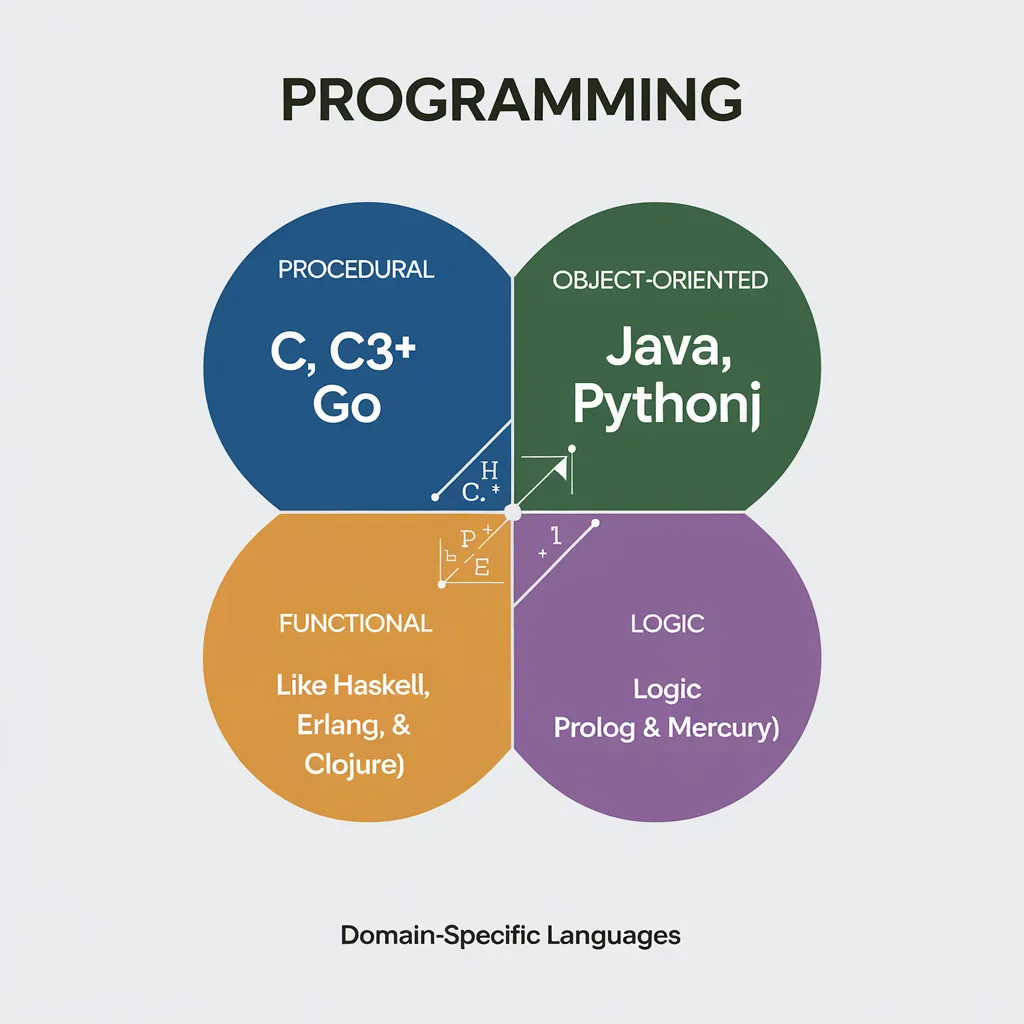
When diving into the world of other coding languages and other popular languages of programming, it’s helpful to know that the best programming languages come in various types, each with its unique features and uses. Here are some of the main categories of best languages of programming:
Procedural Programming Languages: These languages follow instructions to achieve a task. Think of them as recipes, where each step must be followed in order. Examples include C and Pascal.
Object-Oriented Programming Languages: These languages are based on the concept of “objects,” which can be data or code. They are great for building complex software systems. Popular examples are Java, C++, and Python.
Functional Programming Languages: These focus on mathematical functions and avoid changing states or mutable data. They are excellent for tasks that require a lot of calculations. Examples include Haskell and Lisp.
Logic Programming Languages: These are based on formal logic and are used to solve problems by defining rules and facts. Prolog is a well-known logic programming language.
Scripting Languages: These are often used for automating tasks and are usually easier to learn. Examples include JavaScript, Python, and Ruby.
Markup Languages: While not traditional languages of programming, they are essential for web development. HTML (Hypertext Markup Language) is a prime example.
Understanding these types of imperative about the other languages and languages of programming can help you or your child choose the right languages of programming to learn from for specific projects, making the learning process more effective and enjoyable.
What Programming Languages Should Kids Learn First?
When introducing kids to programming, it is essential to start with a programming language that is engaging, easy to understand, and offers a solid foundation in logical thinking. This handy list of beginner-friendly languages has you covered. These options strike a perfect balance between functionality, creativity, and ease of learning.
1. Scratch
Type- Visual Block-Based
Developed by MIT Media Lab
Best for Ages 8 and up
Why is it great for kids:
Visual & Interactive- Scratch uses a drag-and-drop interface for easy program creation
Community Resources- Access to tons of projects, tutorials and resources for inspiration
Creative & Fun- Encourages creativity through engaging projects like games and animations
- Skills Developed- Problem-solving, Logic and foundational coding concepts
2. Python
Type-Text Based
Best for- Ages 10 and above
Why is it great for kids:
Easy to read-Python has a simple and clear syntax that is perfect for beginners switching from beginner languages of programming.
Versatile & Powerful-Python is used in a variety of real-world applications, like web development and data science, making it a valuable language to learn early on
Many libraries-Python offers a wide range of libraries, particularly in educational settings. For example Turtle Graphics helps kids visualise codes through graphics and games
Skills gained- As kids learn Python, they develop logical thinking, syntax comprehension, basic data handling and even game development skills
Blockly
- Type-Visual,Block-Based
- Developed by- Google
- Best for- Ages 6 and up
Why is it great for kids:
- Visual Drag and Drop Fun- Just like building with blocks, kids can visually piece together code without the intimidation of text-based coding
- Problem Solving Power- Help your kids hone their problem-solving skills by breaking down big tasks into smaller and more manageable steps
- Intergration Galore- Blockly plays well with others. Pair it with cool hardware like robots or Iot projects for endless learning possibilities.
Type- Text-based
Best for Ages 12 and up
Why is it great for kids:
Interactive and Immediate Feedback- Javascript lets you test the code in web browsers and see the effects right away
Widely used in Web applications- Learning Javascript is like unlocking a secret code to building your website. Imagine having the power to create your web pages.
Libraries and Framework- Javascript comes with cool tools like PS5.js that make creating graphics and animations a breeze. You will feel like a pro coder in no time.
Skills developed—As you master Javascript, you will gain a deeper understanding of web technologies, sharpen your logical thinking, and become a champion problem solver.
Type-Text Based, with visual elements in the playground
Developed by Apple- Best for Ages 10 and up
Why is it great for kids:
Interactive Fun-Swift playgrounds turn learning into a game of puzzles and animations
iOS Development- Perfect for kids interested in creating apps for Apple devices
Easy Learning- Guided lessons and challenges help beginners grasp the basics of swift programming
Skills Learned- Coding fundamentals, iOS development and problem-solving
Type- Visual, Game Based
Developed by- Microsoft
Best for- Ages 8 and up
Why is it great for kids:
Game-Oriented Learning- kids can create their 3D games without needing to code.
Focus on problem-solving-Encourages, logical thinking, and programming concepts.
Intuitive visual Language- Makes it easy for kids to focus on storytelling and design.
Type- Text-Based
Best for Ages 10 and up
Why is it great for kids:
Game Development Fun—Lua is the language behind Roblox, a cool online platform where kids can bring their ideas to life.
Simple to understand-Lua's syntax is easy to grasp with plenty of tutorials geared towards creating games in Roblox
Hands-On Creativity—Kids can build their 3D worlds and instantly see how their code shapes the virtual environment—it's super exciting. Through Lua, kids can develop game design, storytelling, logic, and teamwork skills.
Type- Visual, Drag-and-Drop
Developed by- Carnegie Mellon University
Best for Ages 10 and up
Why is it great for kids:
3D Graphics- Kids can easily create animations and 3D Games using a simple drag-and-drop interface with Alice. It's a fun way to combine visual storytelling with programming.
Encourages Creativity-Kids can let their imagination run wild by creating interactive stories, games and animations. It's a great way for them to feel a sense of achievement.
Introduction to object-oriented programming language- Alice is a fantastic way to introduce kids to the basics of object-oriented programming. This knowledge can set them up for success when they move on to languages like Python and Java
Skills developed- Storytelling, animation, design, logic and understanding object-oriented programming concepts.
Type-Visual, Block-Based (Transition to text-based)
Best for Ages 7 and up.
Why is it great for kids:
Code Variety- Tynker starts with fun block-based programming and later introduces kids to real coding languages like Javascript and Python, giving them room to explore and grow.
Engaging Lessons- With structured courses, interactive games and challenging activities. Tynker keeps kids excited about learning to code
STEM Ready-Tynker is all about STEM education, helping kids build skills that could be super useful in building future career
Skills Galore- By using Tynker, kids get to flex to their logical thinking, problem-solving and creativity muscles as well as learn the basics of coding in different languages.
These languages are a great starting point for kids to learn problem-solving, logical thinking, and creativity while enjoying themselves. With a mix of visual and text-based tools, they can start with the basics and gradually move on to more complex coding concepts at their own pace.
Tips for transitioning from block-based scripting language to text-based coding and other languages as kids advance
Here are some tips to assist kids as they transition from block-based coding to text-based programming languages.
Get to know Syntax Basics- Teach them about syntax basics rules such as indentation, punctuation and spacing, often hidden in block-based language. Use simple examples to illustrate these concepts
Point Out Similarities- Show concepts like conditionals, loops, and variables in block coding similar to their text-based counterparts. This will make the transition feel more familiar
Start with User-Friendly Language- Consider introducing them to beginner-friendly languages like Python, which has a clean syntax and readability and is similar to block coding logic. This will make the transition smoother for them
Encourage Reading Code- Encourage children to start by reading lines of text-based code before jumping into writing their own. This way, they can grasp the flow and structure of coding without feeling overwhelmed by creating something from scratch
Explore Hybrid Platforms—Platforms such as Blockly and Scratch jnr allow kids to see block code translated into text format. This handy feature helps them make connections between the two languages and boosts their confidence as they navigate coding.
Start Early with Debugging—It's normal to make mistakes when working with text-based code. By teaching kids basic debugging skills early on, they can easily learn how to troubleshoot errors and decipher tricky error messages.
These tips will help young learners feel more confident and excited about advancing from block-based coding to text-based programming languages.
Programming Languages for Specific Domains
Java Script
Swift
Kodu Game Lab
Lua (with Roblox)
Alice
Tynker
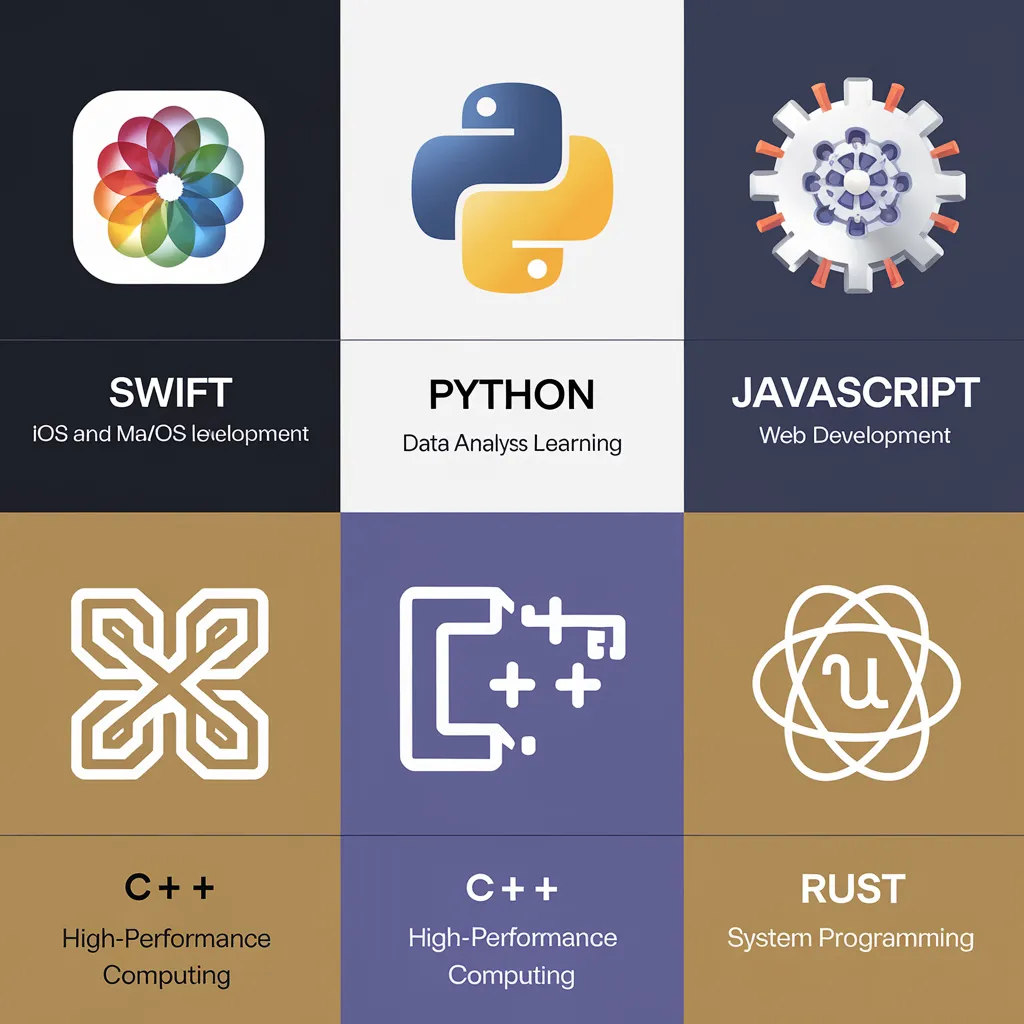
As different operating systems, software engineering tools and operating systems are suited for different tasks, various programming languages and operating systems are tailored for specific industries or domains. Here’s a look at some of the most popular languages of programming and the fields in which they excel in:
Web Development: Languages like HTML, CSS, and JavaScript are essential for creating websites and web applications. JavaScript, in particular, is a popular programming language for adding interactivity to web pages.
Data Science and Machine Learning: Python and R are the go-to languages for data analysis, visualization, and machine learning. Python’s simplicity and extensive libraries make it a favourite among data scientists.
Mobile App Development: Swift is used for iOS app development, while Kotlin and Java are popular for Android apps. These languages are designed to create smooth and efficient mobile applications.
Game Development: C++ and C# are widely used in game development, especially with game engines like Unity and Unreal Engine. These languages offer the performance and control needed for high-quality games.
Embedded Systems: C and Assembly are commonly used to program hardware and embedded systems. These languages provide the low-level access required for hardware manipulation.
Enterprise Software: Java and C# are often used in large-scale enterprise applications due to their robustness and scalability.
By understanding which programming languages are best suited for different domains, young learners can make informed decisions about which languages to learn and focus on, aligning their learning with their interests and future career goals.
Resources for Programming Languages to learn
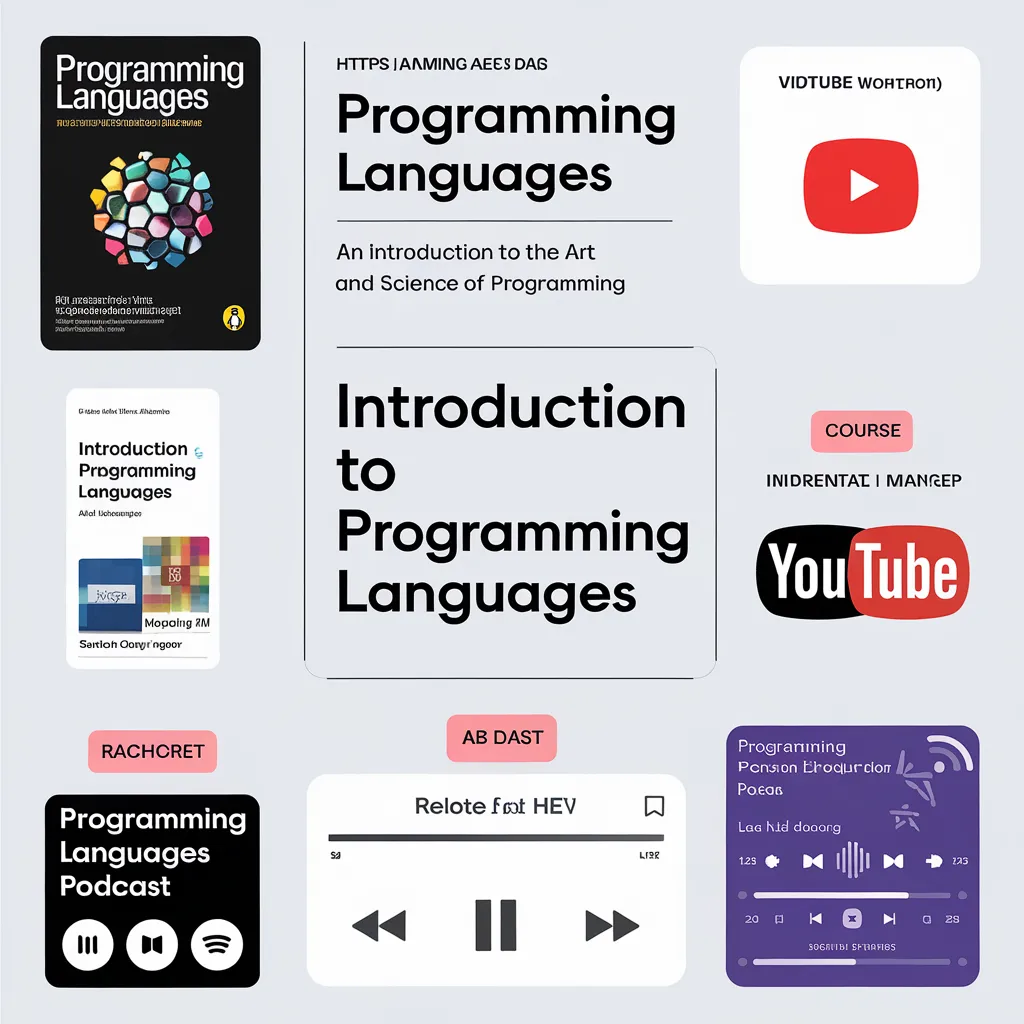
Embarking on the journey to learn programming can be exciting and rewarding, especially with the plethora of various computer science, languages and resources available today. Here are some excellent resources many popular languages of programming have to help kids and beginners get started:
Online Courses: Websites like Codecademy, Khan Academy, and Coursera offer interactive courses in various programming languages. These platforms provide structured learning paths and hands-on projects.
Tutorials: YouTube and other video platforms have countless tutorials that cover everything from the basics to advanced topics. Channels like “Programming with Mosh” and “The Coding Train” are great places to start.
Books: Many beginner-friendly books are available, such as “Python for Kids” by Jason R. Briggs and “Hello World! Computer Programming for Kids and Other Beginners” by Warren Sande and Carter Sande. These books are designed to make learning fun and engaging.
Coding Communities: Joining coding communities like Stack Overflow, GitHub, and Reddit can provide valuable support and resources. These communities are great for asking questions, sharing projects, and learning from others.
Coding Camps and Workshops: Many organizations offer coding camps and workshops for kids. These programs provide hands-on experience and are often led by experienced instructors.
By leveraging these resources, young learners of web developers can build a strong foundation in procedural languages of programming, making the learning and development process of web browsers more enjoyable and effective.
Programming Languages - FAQs
How can learning programming languages benefit children in the long term?
Learning to code is a great skill to have. It helps boost problem-solving skills and critical-thinking abilities, which are useful in any field. Kids can think logically and creatively by learning how to code, making them ready to tackle tricky problems. Plus, it opens up exciting career opportunities in the fast-growing tech industry, giving them a leg up as they start their professional journey.
What are the key differences between the most popular programming languages for kids?
Scratch, Blockly, Python and Javascript- caters to different needs of young learners. Scratch is a visual object-oriented programming language that uses blocks to help young learners grasp coding concepts through engaging and interactive concepts. Blockly offers a similar block-based object-oriented approach with advanced procedural programming concepts to teach logic and sequencing without syntax complexities. Python is known for its readability and transitions well from visual programming to advanced tasks like data science, web page development and automation. Java script excels in web development, enabling interactive website creation. Python and Javascript run on multiple platforms.
Which programming languages are the best to learn for a future in software development?
Regarding software development, the best programming languages to learn depends on your interest. For web development, Javascript, HTML, CSS and Python are essential tools, with frameworks like React, Angular, Django and Flask enhancing their capabilities. Data science professionals rely on Python for its data analysis and machine learning prowess, while R is preferred for its statistical analysis and visualisation. In computer science C and C++ are crucial for low-level programming and perormance focused applications like game development.
Why should kids learn programming languages early in their education?
Coding early on in life can help kids in many ways. It boosts their critical thinking and problem-solving skills by teaching them to tackle big tasks one step at a time. Plus, it's a great way for them to let their creativity shine and develop cool ideas using technology. When the kids start coding from a young age, they also get a chance to build resilience and learn how to keep trying even when things get tough. So not only does learning to code set up kids with important skills for the future, but it also helps brains grow and get ready for all the awesome opportunities.
What programming languages should I learn to get started with coding as a beginner?
For complete beginners looking for a functional programming language to start their programming journey,several entry-level programming languages stand out because of their simplicity and supportive communities, including Python for its readability and versatility across various applications. Java scripts is great for web development, offering immediate results. Scratch, a visual scripting language, teaches coding concepts to young users. Ruby stands out for its elegant syntax and focus on productivity. Learning any of these can build a strong foundation for tech exploration.
What makes object-oriented programming more accessible for young learners?
Beginner-friendly programming language can make learning code a breeze! Instead of getting overwhelmed by complex syntax,you can dive right in with visual interfaces like Scratch or Blockly. Just snap together blocks to create commands- no need to worry about long lines of code. It makes it easier to grasp the logic and minimises errors so you can focus on problem-solving instead of memorising rules. Plus, with gamified learning, you will have fun earning rewards and become a coding whiz.
Can kids effectively learn both block-based and text-based programming languages?
Kids can easily leap from block-based to text-based programming by slowly delving into simple, functional programming languages like Python. Python has an easy-to-understand syntax and complements the logical thinking they have already cultivated through scratch and blocky. Children who start with Block-Based Programming language understand essential concepts like sequencing, loops and conditionals visually and intuitively. They can build on this foundation and enhance skills like precision, syntax and problem-solving as they progress towards text-based languages. Mastering both functional programming languages gives kids a comprehensive coding education, allowing them to appreciate the creative side of coding and the structured, detailed-oriented approach.
Comments
Your comment has been submitted successfully!